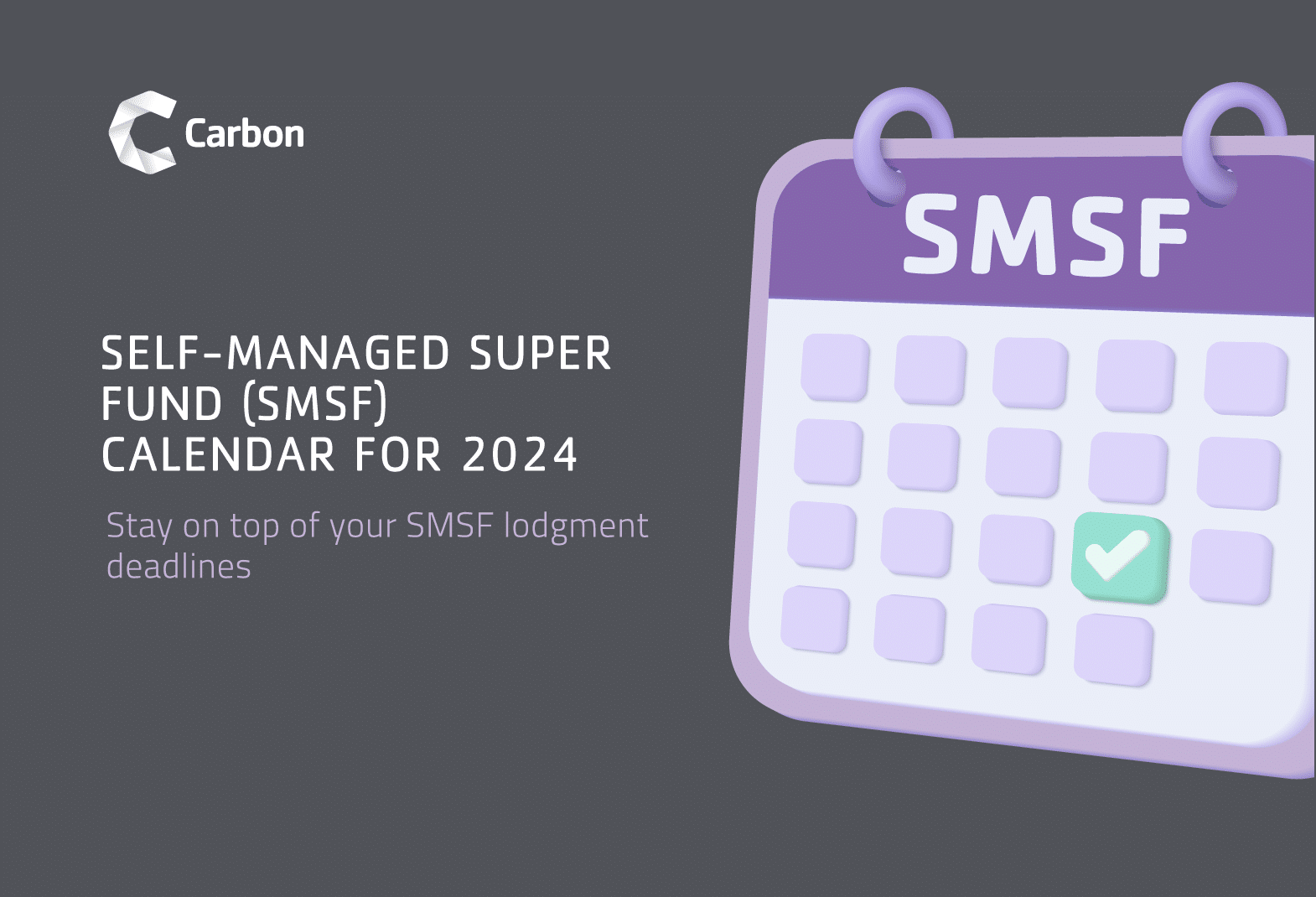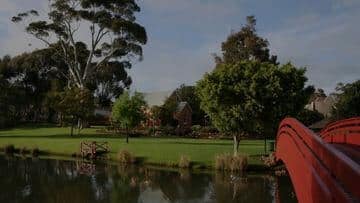It can be confusing to know exactly when to lodge your SMSF, there are several deadlines to be aware of. This list should help you to keep it straight.
Stay up to date with our 2024 SMSF Calendar.
14 January
If you lodge your annual SMSF returns yourself, you need to appoint an auditor 45 days prior to the lodgement due date of 28 February, which is 14 January.
28 January
Where any transfer balance event occurred between 1 October 2023 and 31 December 2023, you are required to report these events by lodging a transfer balance account report (TBAR).
These events include the start of a retirement phase income stream, ending a retirement phase income stream (reverting part or all of the pension to the accumulation phase), or where a lump sum has been accessed from the retirement phase.
SMSF trustees should have received all relevant Super Guarantee (SG) Contributions for the period 1 October 2023 to 31 December 2023 for eligible fund members by this date.
28 February
You need to lodge your SMSF annual return by this date if you are lodging it yourself or if you are a newly registered SMSF and using a tax agent (unless you were advised of a 31 October 2023 date at registration).
If your fund is registered for GST, you will need to lodge your quarterly (December) BAS by this date.
This would be most common for SMSFs that own commercial property and collect rent from that property or if your GST turnover is more than $75,000. Rent received on residential property would not usually be subject to GST.
| Quarter | Due Date (if lodging yourself) |
| 1. July, August and September | 28 October |
| 2. October, November and December | 28 February |
| 3. January, February and March | 28 April |
| 4. April, May and June | 28 July |
15 March
Consider the capital gains tax (CGT) position of the fund with your financial planner. The end of the financial year might seem some time away but it can take time to sell lumpy assets such as property.
28 April
Where any transfer balance event has occurred between 1 January 2024 and 31 March 2024, you are required to report these events by lodging a transfer balance account report (TBAR) by this date.
SMSF trustees should have received all relevant Super Guarantee (SG) Contributions for the period 1 January 2024 to 31 March 2024 for eligible fund members by this date.
Where your SMSF is registered for GST, your Q3 BAS is now due if you lodge yourself.
15 May
If you are using a tax agent and are not a new SMSF you won’t need to lodge your fund’s annual return until this date. Even so, you will need to have appointed an auditor at least 45 days before the lodging date (or by the end of March).
1 June
Is your SMSF paying a pension? Has it paid the minimum pension amount yet? If not, you now have 29 days to make sure payments are up to date. Keep in mind that it is always best practice to have these amounts cleared from the SMSF bank account before 30 June. See the table below for minimum pension requirements (expressed as a percentage of pension account balance on 30 June of the financial year prior to the one in which payments are made).
Also, if a member is starting a pension on or after 1 June, there is no requirement to pay any pension until the next financial year.
| Age of beneficiary | Minimum percentage factor |
| Under 65 | 4% |
| 65 to 74 | 5% |
| 75 to 79 | 6% |
| 80 to 84 | 7% |
| 85 to 89 | 9% |
| 90 to 94 | 11% |
| 95 or more | 14% |
15 June
Do you have any unused concessional contributions from the previous year? If you do, and your total super balance is less than $500,000, you can make additional concessional contributions which may allow a higher personal tax deduction. However, if you’re 67 to 74 years old, you will be required to meet the work test or work test exemption to claim a deduction for a personal superannuation contribution. If you’re 75 years or older, your fund can always accept compulsory employer contributions and downsizer contributions (not personal concessional).
If you couldn’t make concessional contributions in any of the five previous financial years or did not make use of the full amount, you can now carry forward those unused concessional contributions and contribute these amounts in the current financial year where eligible.
30 June
You will need to value your fund’s assets at this date for your annual tax return.
Listed assets are valued at their closing price on 30 June. If you have real property in your SMSF, it would be prudent to value the property each year. A valuation undertaken by a property valuation service provider, including online services or a real estate agent, would be acceptable. However, the valuation should stipulate the supportable data if it is the sole source of evidence being relied upon to substantiate the valuation. For example, in the case of a real estate agent appraisal or online report, the valuation should list the comparable sales it relied on.
The ATO also says that “it may be wise” for SMSF trustees to seek an independent valuation for some other assets, such as unlisted securities and unit trusts, or where the valuation of the investment is likely to be complex. You can view the valuation guidelines for SMSF here.
1 July
It’s time to calculate the minimum pension payment for members in the retirement phase. This is based on the member’s age on 1 July and their (prior) 30 June pension balance.
For some members, the actual minimum pension percentage factor may have increased. For example, a member who turned 65 in the last 12 months would now have an increased minimum pension factor of 5%, up from 4% last financial year. You can refer to the minimum pension factors in the June tab.
For all pension members, your minimum pension payment requirements would rarely be the same from year to year due to changes in your pension account balance. You therefore need to consider adjusting any direct debit arrangements where pension payments are made automatically. The main consideration is to ensure that at least the ANNUAL minimum amount is paid out to the member by the end of the financial year – 30 June 2025.
It would also be time to start thinking about your SMSF’s investment strategy for the year ahead. What do your investments look like? Do you need to consider rebalancing if your asset allocations are out of whack? Will the SMSF need to start paying any member(s) a pension this financial year?
Are there any other big events such as new trustees, that might be on the cards this year? You’ve just closed off one financial year so no need to jump onto these things straight away but do put them on the radar.
Also, keep in mind that it is now just 12 months until the new Division 296 tax rules for member balances above $3 million come into force. These rules will result in an additional 15% tax being levied on super fund earnings on member balances above $3 million. Although this is a tax that is levied and payable by the member personally, some SMSF members (as with all superannuants) may need to consider what, if any, changes need to be made to their superannuation savings.
5 July
For SMSFs with a corporate trustee, take note of your fund’s relevant (ASIC) corporate trustee annual review fee date. This date varies so we have slotted it in here, early in the financial year, to remind you to check this date and to make a note of it.
There may be a late fee if you don’t pay it on time.
28 July
Where any transfer balance event has occurred between 1 April 2024 and 30 June 2024, you are required to report these events by lodging a transfer balance account report (TBAR) by this date.
SMSF trustees should have received all relevant Super Guarantee (SG) Contributions for the period 1 April 2024 to 30 June 2024 for eligible fund members.
Where your SMSF is registered for GST, your Q4 BAS is now due.
17 August
If you established your SMSF last financial year, or if you did not lodge your annual return on time the previous financial year, you need to lodge your annual return by 31 October. That means you need to start thinking about appointing an auditor for the audit report to lodge with your annual report.
Don’t forget, that you need to appoint your SMSF auditor no later than 45 days before you must lodge your SMSF annual return.
28 October
Where any transfer balance event has occurred between 1 July 2024 and 30 September 2024, you are required to report these events by lodging a transfer balance account report (TBAR) by this date.
SMSF trustees should have received all relevant Super Guarantee (SG) Contributions for the period 1 July 2024 to 30 September 2024 for eligible fund members. The SG rate increases on 1 July 2024 from 11% to 11.5%.
Where your SMSF is registered for GST, your Q1 BAS is now due.
31 October
Your due date to lodge your SMSF annual return (SAR) was 31 October if:
- Your SMSF is newly registered and you’re preparing your own return, or
- You have overdue SMSF annual returns from prior financial years.
1 December
If you are lodging your annual return on 31 October, you must pay your SMSF’s annual supervisory levy by this date. This must now be paid in advance so if your SMSF was only established last financial year you will have to pay double.
31 December
It is now just six months until the new Division 296 tax rules for member balances above $3 million take effect. You may need to start thinking about and implementing any agreed changes within the SMSF.
The Importance of Record Keeping
Remember, the ATO requires you to keep the following records for a minimum of five years:
- Accurate and accessible accounting records that explain the transactions and financial position of your SMSF.
- An annual operating statement and an annual statement of your SMSF’s financial position.
- Documentation showing decisions made about what benefit payment type was paid (pension, lump sum, or a combination of both) and the account the payment was paid from.
- Copies of all SMSF annual returns lodged.
- Copies of transfer balance account reports lodged.
- Copies of any other statements you are required to lodge with the ATO or provide to other super funds.
These records for a minimum of ten years:
- Minutes of trustee meetings and decisions if matters affecting your fund were discussed, for example, you reviewed the fund’s investment strategy.
- Records of all changes of trustees.
- Trustee declarations recognising the obligations and responsibilities of any trustee or director of a corporate trustee, appointed after 30 June 2007.
- Members’ written consent to be appointed as trustees.
- Copies of all reports given to members.
- Documented decisions about the storage of collectables and personal use assets.
Division 296 Tax: The Proposed $3m Super Tax
From 1 July 2025, earnings on balances exceeding $3 million including unrealised gains will attract an increased concessional tax rate of 30 per cent. Earnings on balances below $3 million will continue to be taxed at the concessional rate of 15 per cent.
Defined benefit interests will be appropriately valued and will have earnings taxed under this measure in a similar way to other interests to ensure commensurate treatment. The additional tax on earnings imposed by this change is expected to affect around 80,000 people from 2025–26 or approximately 0.5 per cent of Australians with a superannuation account. Read more on the ATO’s website here.
Need Help Managing Your Self-Managed Super Fund?
Navigating the complexities of Self-Managed Super Funds (SMSF) can often feel overwhelming, especially when it comes to compliance and meeting deadlines.
At Carbon, we understand the importance of staying compliant and the challenges that come with managing an SMSF. Our team of SMSF specialists are equipped with the knowledge and expertise to guide you through every step of the process, ensuring that your fund stays on track and meets all regulatory obligations.
If you’re finding it difficult to keep up with the various requirements of managing your SMS, or if you simply want to ensure that you are making the most of your superannuation, don’t hesitate to reach out to us. Our specialists are here to provide you with personalised support and expert advice, taking the burden off your shoulders so you can focus on what’s most important – planning for a comfortable retirement.
We have teams located all over Australia and can help you from your nearest Carbon office or virtually.






















